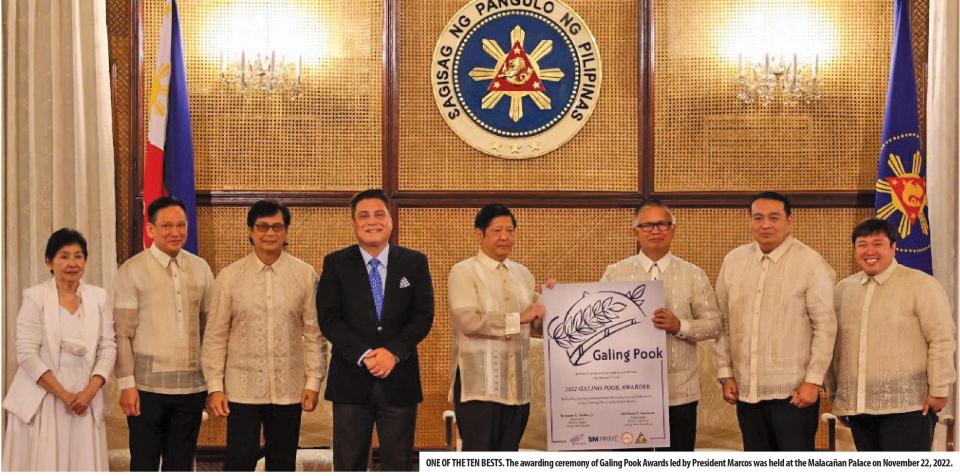Conclusion
A study by the Japan International Cooperation Agency (Jica) indicated that the “water quality in the eastern part of Boracay beach is alarming, making it unsafe for swimming and other human activities.”
The Jica study, which covered the years 2010 to 2015, said “direct discharge of untreated wastewater near the shore brings poor water-quality level that consequently results in frequent algal blooms and coral-reef deterioration.”
It should be noted that this wasn’t the first time a study of Boracay’s waters had been published. As far back as 1997, the Department of Environment and Natural Resources (DENR) already reported that it found the swimming areas and groundwater of the island had been contaminated with E. coli, bacteria that are normally found in fecal matter. The report resulted in canceled bookings in a number of resorts for about a year.
But with government tourism-promotion agencies continuing to push the Boracay agenda, tourists returned to the island, double or triple the numbers that had cancelled before.
Overcrowding, flooding, garbage issues
THE main beach road has also become crowded with tricycles, shuttle services of resorts and private vehicles.
According to the Philippine Chamber of Commerce and Industry-Boracay President Elena T. Brugger, “When it comes to tricycles [and private] vans, they’re too many for a small island.” Flooding also keeps recurring on the island, even with the usual rainy weather, the likes of which were not present according to locals who have transplanted themselves to Boracay for work for the past 20 years. The flooding issue took center stage once more when Typhoon Urduja swept through the island last December, causing tourists and locals to wade in waist-high water.
The DOT, in its report to the House Committee on Tourism chaired by Rep. Lucy Torres-Gomez of First District of Leyte, traced the flooding issue mainly to resorts being built over bodies of water, as well as improper drainage. Tourism Assistant Secretary for Public Affairs Frederick M. Alegre said Tieza found 11 commercial establishments that illegally connected to its rainwater drain pipe, spewing out their untreated wastewater and sewage into the open sea.
Garbage has also been improperly disposed on the island. While waste-segregation rules were imposed in 2012, or 12 years after the Solid Waste Management Act in the Philippines was enacted, the DENR last year found unsegregated garbage in the island’s materials recovery facility in Baranggay Manoc-Manoc.
The findings prompted Environment Secretary Roy A. Cimatu to threaten Malay Mayor Ciceron S. Cawaling with administrative sanctions unless the latter solved the garbage issue. The latter promised to ship out tons of garbage to the sanitary landfill in the mainland.
Another administration, another EO
AS early as 1978, then-President Ferdinand E. Marcos recognized the tourism potential of Boracay Island and saw the need to regulate its development.
Marcos issued Proclamation 1801, which declared Boracay and several other islands, coves and peninsulas in the Philippines as tourist zones and marine reserves “under the administration and control of the Philippine Tourism Authority [PTA].”
The president further mandated that “no development projects or construction for any purposes shall be introduced within the zones without prior approval of the president of the Philippines upon recommendation of the [PTA].” Since then, more congressional resolutions and presidential executive orders had been issued, each one not quite solving Boracay’s worsening environmental problems, nor addressing its overbuilding issues.
At a House of Representatives Committee on Tourism hearing on DOT’s plans for Boracay, Tourism Secretary Wanda Corazon T. Teo asserted the Local Government Code enacted in 1992 stripped the agency of its police powers and devolved this to local government units (LGU). It is this very same code that rendered former President Gloria Macapagal-Arroyo’s Executive Order (EO) 706 issued in 2008 “unimplementable.”
In the said EO, Arroyo placed Boracay once more under PTA’s control, reiterating Marcos’s earlier Proclamation 1087. EO 706 also mandated the Malay LGU to impose a moratorium on new building permits, until PTA drew up a master development plan for the island.
Contradictory provisions
FORMER Tourism Secretary Joseph Felix Mari H. Durano, who was PTA chairman in 2008, explained to the BusinessMirror why EO 706 was not implemented.
According to Durano, there is a continuing jurisdictional competition between the DOT/PTA, now Tieza and the Municipality of Malay as far as development authority over Boracay.
“On one hand, DOT/PTA was given administrative authority under the EO. On the other hand, the Local Government Code grants LGUs its governmental powers, which includes the issuance of permits,” he explained. “Even with the EO, DOT/PTA does not have supervisory powers over LGUs that will allow [both agencies] to reverse actions of LGUs. With the present setup, all stakeholders must just work together for the sustainability of the island.”
But while the Malay LGU may have the law on its side, Durano believes it cannot escape its responsibility in keeping tourism on the island sustainable.
“The accountability I see in the issuance of the building permits is whether environmental and building laws were complied.”
For her part, Teo has already announced that she and Cimatu are currently preparing an executive order for President Duterte’s signature, which would establish an interagency task force to oversee Boracay’s development and swiftly respond to problems the island faces.
Under the proposed EO, the interagency task force can force the municipal government to penalize resorts and establishments caught violating environmental laws or have them close down.
“Otherwise, [the mayor] can be charged with administrative sanctions as provided for in Executive Order 292,” otherwise known as the Administrative Code of 1987, she said.
Saving Boracay
DURING the hearing at the House of Representatives, Cawaling said the Mayor’s office enforces a three-strike rule, where violators are given the chance to address their issues.
It is only after the third violation that these establishments can actually be shuttered, he said. He also earlier told a news conference in Boracay that he couldn’t impose a moratorium on new constructions on the island, without making a proper inventory of existing establishments.
Under the proposed EO, a Boracay interagency task force will be chaired by the DENR, with the tourism secretary as cochairman, with members coming from Tieza, the departments of the Interior and Local Government, Social Welfare and Development, Public Works and Highways, Agriculture, Philippine National Police, LGU of Boracay, PCCI-Boracay, Boracay Foundation, municipality of Malay and the province of Aklan.
Like Boracay stakeholders and regular visitors to the island, I sincerely hope the new EO would address the issues on the island, and protect its environment from collapsing. The DOT and the DENR are in possession of a list of resorts and commercial establishments, which have committed infractions against tourism and environmental laws. For its part, Boracay stakeholder groups like PCCI-Boracay and Boracay Foundation need to police its ranks, too. Government can’t do everything for them.
It’s time for real action to save Boracay, before it’s too late.
Image credits: Alysa Salen




































1 comment
We need to promote more tourism sites such as in REINA(Real,Infanta,Nakar) and Polilio group of islands in Quezon province with its nature parks, beautiful beaches and cultures. It is just near Metro Manila and accessible through Marcos HI-way and Manila East Road passing the provinces of Rizal and Laguna.